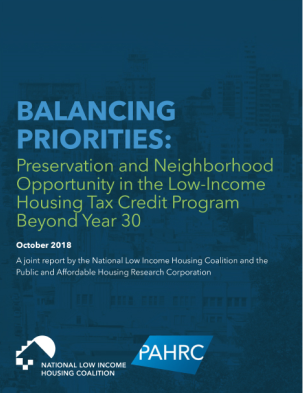Balancing Priorities: Preservation and Neighborhood Opportunity in the Low-Income Housing Tax Credit Program Beyond Year 30
The Low-Income Housing Tax Credit (LIHTC) is the largest national affordable housing program in the U.S. By 2030, nearly half a million current LIHTC units, or nearly a quarter of the total stock will reach the end of all federally mandated rent-affordability and income restrictions. Some of these units will be lost from the affordable housing supply as they convert to market-rate rents. Others may be lost to physical deterioration unless new capital investment is available for rehabilitation and renovation. This report sheds light on these preservation challenges with an examination of the neighborhood characteristics of these LIHTC units and a discussion of how scarce resources for affordable housing lead to a dilemma between the priorities of preserving affordable housing and promoting mobility for low-income families to higher-opportunity neighborhoods. The report addresses this dilemma by offering a broader vision for a housing safety net. In a companion Practitioners Guide we propose five strategies housing providers can consider when developing an affordable housing investment plan that incorporates place-based subsidies. The report was written by the National Low Income Housing Coalition and the Public and Affordable Housing Research Corporation and is based on data from the NHPD and other sources.




